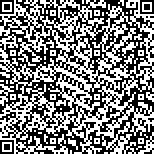程霜霜,高晓平,朱晓斐,张旭,王冬,付丽,程迎.脑卒中患者痉挛上肢肌肉协调性的表面肌电研究[J].中华物理医学与康复杂志,2017,39(5):342-346
扫码阅读全文

|
| 脑卒中患者痉挛上肢肌肉协调性的表面肌电研究 |
|
| |
| DOI: |
| 中文关键词: 脑卒中 表面肌电图 痉挛 股四头肌 |
| 英文关键词: Stroke Spasticity Surface electromyography Muscle coordination Abnormal synergy |
| 基金项目:国家自然科学基金(61401421);中央高校基本科研业务费专项资金(WK2100230014) |
|
| 摘要点击次数: 5164 |
| 全文下载次数: 7263 |
| 中文摘要: |
| 目的探讨脑卒中患者痉挛上肢各关节最大等长收缩(MIVC)时的表面肌电(sEMG)信号变化,定量分析异常协同运动模式,为上肢肌肉协调性的康复提供客观依据。 方法选取10例脑卒中偏瘫患者和10例健康成人纳入研究,在进行屈腕、屈伸肘及肩外展MIVC时,记录尺侧腕屈肌、肱二头肌、肱三头肌及三角肌的sEMG信号,计算协同收缩率(CR)和共激活比值,对两者进行分析比较。 结果屈伸肘时,病例组患侧肱二头肌CR大于健侧及对照组(P<0.05),患侧肱三头肌CR大于对照组(P<0.05),患侧、健侧及对照组肱二头肌CR均大于肱三头肌CR(P<0.05),患侧肱二头肌、肱三头肌CR差值大于健侧及对照组(P<0.05);屈肘时,患侧尺侧腕屈肌、肱三头肌、三角肌的共激活比值大于健侧及对照组(P<0.05),患侧尺侧腕屈肌的共激活比值大于肱三头肌(P<0.05);伸肘时,患侧尺侧腕屈肌、肱二头肌、三角肌的共激活比值大于健侧及对照组(P<0.05),患侧尺侧腕屈肌的共激活比值大于肱二头肌(P<0.05);屈腕时,患侧肱二头肌、三角肌的共激活比值大于健侧及对照组(P<0.05),患侧肱二头肌的共激活比值大于三角肌及肱三头肌(P<0.05);肩外展时,患侧肱二头肌的共激活比值大于健侧及对照组(P<0.05)。 结论脑卒中患者痉挛上肢常表现为屈肌痉挛和典型异常的协同运动模式,在康复治疗中,应注重抑制屈肌痉挛,改善上肢异常协同运动模式,促进上肢肌肉整体协调性的康复。 |
| 英文摘要: |
| Objective To explore any changes in the surface electromyography (sEMG) signals measured on the spastic upper limb muscles of stroke parents during maximum isometric voluntary contraction and to analyze any abnormal synergy patterns quantitatively in order to design better rehabilitation programs for developing coordination. MethodsTen stroke survivors with hemiparesis were selected into a patient group and ten healthy counterparts were recruited into a control group. sEMG signals were recorded bilaterally from the flexor carpi ulnaris (FCU), biceps brachii (BB), triceps brachii (TB) and deltoid (D) during maximum isometric voluntary contractions involving wrist flexion and extension, elbow flexion and extension, and shoulder abduction. The two groups′ co-contraction ratios (CR) and co-activation ratios were calculated and compared. ResultsDuring elbow flexion and extension the average CR of the BB on the affected side was significantly higher than that on the unaffected side and also significantly higher than the control group average. The average CR of the TB on the affected side was significantly higher than that of the healthy controls. In all cases the average CR of the BB was larger than that of the TB. The difference in CR between the TB and the BB on the affected side was significantly larger than on the unaffected side and the control group average. During elbow flexion, the co-activation ratio of the FCU, TB and D on the affected side was significantly higher than on the unaffected side and among the healthy controls, and the co-activation ratio of the FCU on the affected side was significantly higher than that of the D and TB. During elbow extension, the co-activation ratio of the FCU, BB and D on the affected side was significantly higher in the same way, and the co-activation ratio of the FCU on the affected side was again significantly higher than that of the D and BB. During wrist flexion, the average co-activation ratio of the BB and D on the affected side was significantly greater than that on the unaffected side and among the healthy controls, and the co-activation ratio of the BB on the affected side was significantly higher than that of the D and TB. During shoulder abduction, the co-activation ratio of the BB on the affected side was significantly larger than on the unaffected side and among the healthy controls. ConclusionAfter a stroke the upper limbs often show flexor spasticity and abnormal synergy patterns. Rehabilitation strategy should be adopted to tackle these so as to enhance overall limb coordination. |
|
查看全文
查看/发表评论 下载PDF阅读器 |
| 关闭 |
|
|
|